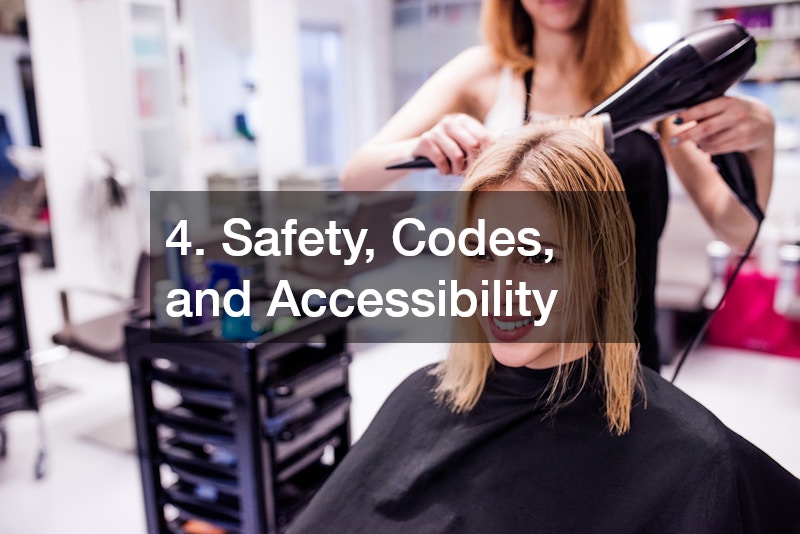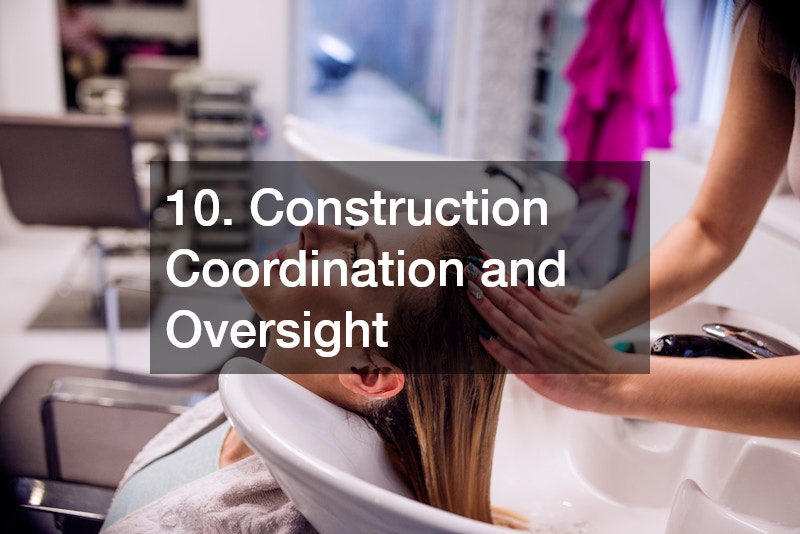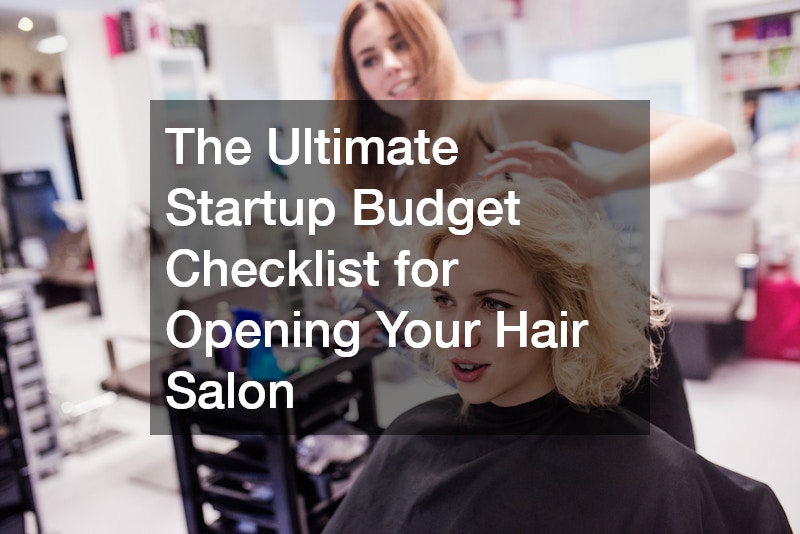Opening your own hair salon is both an exciting and demanding endeavor that combines creativity with business discipline. From finding the right location to building a team of stylists and contractors, every decision impacts your success. The foundation of this journey is creating a realistic and well-structured salon budget. Without a detailed plan, it’s easy to overspend or overlook critical costs that appear later during construction or operation. A thoughtful budget helps you allocate resources efficiently, minimize financial risk, and set the tone for long-term profitability.
Building a hair salon involves more than selecting mirrors and styling chairs; it’s a complex project that touches nearly every aspect of construction and compliance. You’ll work with builders, electricians, and plumbers while ensuring that your space meets local regulations and offers clients an enjoyable experience. For new salon owners, understanding where to invest—and where to save—can make all the difference. This comprehensive guide walks through each essential step in the budgeting process, helping you identify costs, manage professional services, and anticipate hidden expenses. Whether you’re opening your first salon or expanding to a new location, this checklist will serve as your roadmap to financial preparedness and operational success.
1. Establishing a Financial Foundation

Before diving into design or equipment purchases, your first step should be establishing a clear financial plan. A well-thought-out salon budget will determine how much you can invest in lease agreements, construction, licensing, and staff. You’ll need to estimate both startup and operating costs to ensure you can sustain the business until it becomes profitable. Setting aside extra funds for unexpected expenses—like code upgrades or material shortages—will give you flexibility. A comprehensive financial plan helps prevent shortfalls and keeps your project moving forward smoothly, especially when timelines shift or costs fluctuate.
Working with a financial advisor or a trusted bank can help solidify your funding strategy. A bank can review your credit, discuss loan options, and provide insight into repayment structures that suit your cash flow projections. Many institutions offer small business loans or commercial financing specifically for startups. You’ll also need documentation such as contractor estimates, floor plans, and permits to accompany your application. It’s wise to build an emergency fund within your salon budget for contingencies, ensuring you can handle unforeseen financial challenges during construction or after opening.
2. Choosing the Right Location
Your salon’s location will influence both your client base and your startup costs. Look for areas with high visibility, steady foot traffic, and convenient access to parking. Proximity to complementary businesses—like boutiques, spas, or cafes—can also help you attract new clients. When touring properties, consider how much work is needed to make the space suitable for your salon’s needs. Sometimes, a lower rent can come with expensive renovations, while a newer property may cost more but require less preparation. Your location will also affect licensing requirements and inspections, so factor these into your salon budget early on.
Before signing a lease, it’s important to have the property inspected thoroughly. Ask for a roofing assessment from a roofer to ensure there are no leaks or structural problems that could lead to costly repairs down the line. Evaluate the plumbing, wiring, and HVAC systems to avoid expensive surprises once construction begins. If the property includes parking areas, you may need to consider future maintenance costs, including repainting lines and spaces. Location decisions are long-term commitments, so weigh both the visible and hidden expenses carefully before finalizing your contract.
3. Designing Your Dream Salon
The design of your space sets the tone for your brand, client experience, and workflow efficiency. It’s vital to design with both beauty and practicality in mind. Focus on creating a layout that allows for comfortable movement between stations, clear visibility of stylists’ work, and a relaxing environment for clients. When developing your design concept, incorporate your color scheme, lighting preferences, and overall theme. This design stage is also where your salon budget should reflect costs for materials, furnishings, décor, and specialty installations like lighting and ventilation systems.
When planning the buildout, hiring a qualified general contractor can save you time and money. A general contractor oversees construction, manages subcontractors, and ensures your salon meets building codes. They’ll coordinate with electricians, plumbers, and inspectors, keeping the project organized and compliant. Having an experienced professional lead your construction means your design will be executed properly and efficiently. Their input can help refine your layout to meet functional and regulatory requirements, aligning with both your aesthetic goals and your financial plan.
4. Safety, Codes, and Accessibility

One of the most important yet often overlooked parts of salon ownership is ensuring compliance with safety and accessibility standards. This includes everything from electrical safety to emergency preparedness. When mapping out your design, plan for wide walkways, wheelchair-accessible entrances, and well-marked exits. Fire safety should be top of mind—ensure all exit paths are clear and properly illuminated. The costs associated with these features should be built into your salon budget early, as retrofitting safety measures later can be costly and time-consuming.
Installing and labeling a dedicated fire exit is not only a legal requirement but a crucial step in protecting staff and clients. Fire exits should be easy to locate, unobstructed, and compliant with local fire codes. Collaborate with your contractor and local fire marshal to confirm that all emergency routes are up to standard. This attention to detail not only keeps your business compliant but also promotes peace of mind. Ensuring that your space is safe from day one demonstrates professionalism and care, setting the stage for a trustworthy and welcoming environment.
5. Building a Reliable Infrastructure
Your salon’s plumbing and electrical systems are the backbone of your operations. You’ll need an adequate number of wash stations, water lines, and power outlets to keep your stylists efficient and clients comfortable. Plumbing and wiring can represent a significant portion of your startup costs, particularly if you’re converting a non-salon space. Hiring local plumbers for proper infrastructure planning in your salon budget prevents delays, costly rework, and operational inefficiencies once you open.
Partnering with local plumbers will be essential to ensure the plumbing systems can handle the daily workload of a busy salon. They’ll install shampoo sinks, drainage lines, and fixtures while checking for leaks or pressure issues. A reliable water heater is another vital component, as it provides the consistent warm water needed for shampoos and treatments. Consult your plumber and electrician about the right size and capacity for your water heater to meet demand without wasting energy. These systems must be installed correctly the first time to avoid future interruptions or repairs.
6. Flooring and Interior Finishes
The flooring in your salon does more than complete the aesthetic—it plays a key role in safety and maintenance. It must handle constant foot traffic, spills, and cleaning. When budgeting for materials, consider durability, slip resistance, and comfort. Many salon owners choose luxury vinyl tile, sealed concrete, or water-resistant laminate for their combination of style and practicality. Well-designed floors can also enhance lighting and make the space feel more open. Incorporating flooring costs into your salon budget helps ensure you choose materials that last and align with your brand’s visual appeal.
Working with professionals who specialize in flooring services can simplify installation and provide peace of mind. They can help you compare materials and finishes while ensuring proper sealing and underlayment. Quality flooring installation protects your investment and reduces maintenance costs over time. Flooring experts can also advise on anti-fatigue mats and soundproofing solutions to enhance comfort for stylists and clients alike. Investing in professional flooring services means your salon will look polished, perform well under pressure, and remain easy to maintain.
7. Painting and Interior Design Touches

Color has a profound effect on client perception and staff mood. A well-chosen color palette can make your salon feel modern, elegant, or soothing, depending on your brand image. Paint quality and finish are just as important as the color itself; washable and moisture-resistant paints are ideal for high-traffic areas. Be sure to include painting costs in your salon budget to avoid last-minute cutbacks that can compromise the look of your space. Investing in professional help will ensure consistent coverage and a long-lasting finish.
Hiring painting contractors can elevate your salon’s appearance and streamline the process. They’ll handle surface preparation, edging, and finishing details that create a polished look. Professionals also know how to use primers and coatings to protect your walls against humidity and wear. Whether you choose soft neutrals for a relaxing vibe or bold hues to reflect creativity, expert painters can make your vision a reality. Quality painting not only enhances aesthetics but also adds to the overall professionalism and cleanliness of your salon.
8. Exterior Appeal and Client Impressions
Your exterior is the first impression clients will have of your business. A clean, attractive storefront communicates professionalism and care, encouraging people to step inside. Include signage, lighting, landscaping, and exterior maintenance in your salon budget to ensure consistency between your outdoor and indoor design. Even the parking area plays a role in creating a welcoming environment that feels organized and safe.
To improve curb appeal, consider hiring parking lot painters to freshen up faded lines or add designated customer spaces. Clear parking layouts make it easier for clients to visit, particularly during busy hours. You might also want to repaint your exterior walls or trim to match your brand’s aesthetic. Investing in these details not only enhances visual appeal but also improves accessibility and safety. A clean, inviting exterior can be one of the most effective forms of marketing for your new hair salon.
9. Managing Building Maintenance and Repairs
Even with a new build, maintenance is inevitable. Your salon will experience natural wear and tear over time, from plumbing leaks to paint touch-ups. Planning ahead with a dedicated maintenance section in your salon budget ensures that you’re prepared for these costs. Regular upkeep not only preserves your investment but also prevents small issues from escalating into larger, more expensive problems.
Scheduling roof inspections through a professional roofer can prevent leaks and interior damage. It’s also important to stay proactive about plumbing and HVAC maintenance to avoid unexpected downtime. Creating a maintenance checklist for monthly and annual tasks helps you stay organized and compliant with local building codes. A reliable upkeep plan shows clients that your salon values cleanliness, safety, and long-term care.
10. Construction Coordination and Oversight

Every successful build or renovation relies on clear communication and project management. Coordinating multiple trades—electricians, plumbers, painters, and flooring specialists—requires careful planning. As the owner, you’ll need to maintain oversight to ensure work stays on schedule and aligns with your budget. Detailed documentation and open communication will help you identify potential issues early. A well-managed project creates a foundation for smoother operations once your doors open.
Having a general contractor oversee the process ensures all moving parts work together efficiently. They’ll handle scheduling, permits, quality checks, and communication between subcontractors. Their expertise helps prevent costly mistakes, maintain timelines, and ensure that your salon meets all structural and safety standards. Partnering with a general contractor reduces stress and allows you to focus on business development, staff recruitment, and pre-opening marketing strategies—all while keeping your salon budget under control.
Opening a hair salon is an ambitious but rewarding venture that requires careful financial planning and collaboration with skilled professionals. A comprehensive salon budget is more than a financial tool—it’s a strategic plan that guides every decision, from your first bank meeting to your final walkthrough. When you allocate funds wisely across design, safety, and maintenance, you create a space that operates efficiently and lasts for years.
By hiring experienced contractors, such as local plumbers, painting contractors, and flooring experts, you ensure that your salon functions as beautifully as it looks. Every investment, from your fire exit to your water heater, contributes to the comfort, safety, and satisfaction of your clients. With patience, preparation, and the right partnerships, your dream salon can thrive as both a creative outlet and a sustainable business. A realistic salon budget gives you the clarity and confidence to bring that dream to life—one well-planned step at a time.




